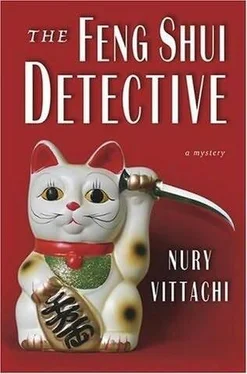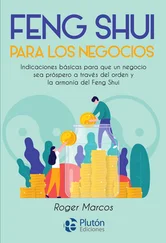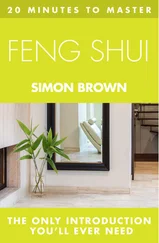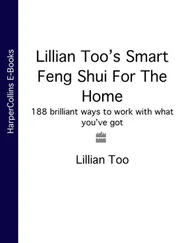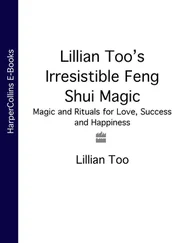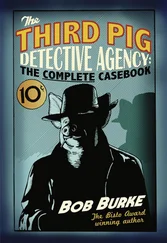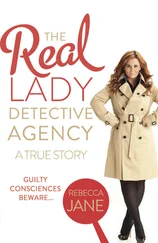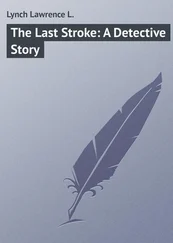Wong had already sketched out a rough chart and was examining it with puzzlement. This assignment, which he had believed would be the easiest of the month, had turned into a challenge. How could an office he had already done, and counted as a success, have turned into such a financial flop? There must be something dramatically wrong with timing. Lo shu charts should provide the answer. But first, he must check the basic shape and direction of the premises.
As he pored over the floor plan, Joyce made an announcement, evidently feeling the need to make amends. ‘Hey, here’s something I can do for you. You need to find the middle first, right? Difficult because the office is such a weird shape with the curved window and that L-shaped bit that goes towards the lift, right? Well, I can calculate the middle of a complex rhomboid. I learned it in geometry. You gotta calculator?’ She held out her hand.
Wong just looked at her.
‘Okay, no calculator, huh? Never mind. I can borrow one from B K’s secretary.’
‘Mr Tin.’
‘Yeah.’
She returned two minutes later with a desk calculator from the accountant’s room and sat down in Tin’s leather seat at the head of the conference table. ‘Lemme see. You measure the sides of these bits first, and then…’ The young woman was relatively silent for the next ten minutes as she sat with her tongue caught between her teeth and covered a sheet of paper with scribbled calculations.
‘Bloody difficult, because of this curved bit,’ she said. ‘Hang on a mo. Hmm. Three point five. Plus a half…’
Another five minutes of scribbled calculations flowed. At last, she sat back and surveyed her handiwork with pride. ‘I think the middle is sort of here. Or maybe a bit this way. Hey, what are you doing?’
She looked up to see the old geomancer had cut a piece of cardboard into the shape of the floor plan. He held up a pencil and attempted to balance the card on it. After a few attempts, he found the point at which the card stayed balanced on the tip of the pencil lead. ‘Here is the middle of the premises,’ he said.
Joyce looked deflated. ‘Oh. Right. Yeah, I suppose that’s a quicker way of doing it.’
She compared the middle of the room, according to his pencil-balancing method, with her own result. ‘Well, I was nearly right, sort of, well not too far out, I guess, anyway, I was in the same sort of bit. Think I’ll go and get some Coke from the machine, want some? No? Whatever.’

Wong soon lost himself in his most arcane charts, studying floor plans, consulting almanacs, taking measurements, taking light readings, taking magnetic readings, examining what was outside the windows, going through each room carefully to make sketches. He drew more than a dozen lo shu charts.
Tin, in an interlude between his endless phone calls, re-entered the room and carefully explained the activities of the office. ‘The writers, artists and so on are in that space over there, because it is supposedly the most creative. Dudley is the chief there. The pages, once read by the proofreaders, are taken to the Sam Long Output Centre, two floors down, for processing by my deputy, Susannah Lo, who is also production editor. We bring each plate back here when ready to go. The final camera-ready pages are prepared by 1.15 p.m. exactly, the day before distribution, which is when it goes to the printers. Hollis News Retail distributes them, largely through its own outlets. Money from dealers, subscribers and advertisers is all dealt with in that little room there. The previous tenants told us that is supposedly the best place for attracting gold and holding on to it, in feng shui terms.’
‘Your office design is correct,’ said Wong. ‘It fits with what I said on my earlier reading of the room. For the previous tenant. What exactly is the problem, please? Low sales, low readers, low advertisements?’
Alberto Tin gave a deep sigh. It was clear that he was a cheerful man by nature, but he was under heavy pressure. As soon as his smile disappeared, Wong could see the heavy grey bags under his eyes and tension in his mouth.
‘The problem is-well, to be honest, I don’t know what the problem is. The readers love us, the mailbag is bigger than ever, we’ve got better writers, better photographers, better design, our marketing woman has been working flat out. But it’s just not working. People are just not buying the thing. We were doing 26 000 a year ago, which is not bad for a young, small mag in a relatively small market. This year we were hoping to climb steadily. Instead we’re down to about 9000 or 10000. We cannot survive like that. The advertisers are dropping out like the proverbial flies.’
‘Why not do some ads on TV?’ said Joyce. ‘You get neat ads these days.’
‘We’ve recently invested a lot of money on an advertising blitz. The circulation climbed by about ten per cent, and then fell back again. Very disappointing.’
‘Distribution: that is okay or not?’ asked Wong.
‘We get extremely good positioning from Hollis. Susannah knows the people from Hollis really well, she has relations there. They make sure we get excellent display, right on the counter-front, at all their outlets. But it’s not been enough. Sales are still down. Without the circulation, we can’t get the advertisers. We’re slowly dying. Our backers have given us four weeks and then they’re closing us down.’
Dispensing the bad news had caused the cheerful little man to wilt like an under-watered rubber plant. His shoulders had become round, his chest had caved in and his head had fallen forwards.
‘It’s a great little mag,’ said Joyce. ‘I mean, by Singapore standards, of course.’
‘Thanks.’
Wong told Tin that he wanted to know more about the physical way money moved in and out of the company. The publisher disappeared, returning five minutes later with a bespectacled woman whom he introduced as Sophie Melun, the newspaper’s financial director. ‘Sophie will tell you what you need to know about the money side. I’m going to have to leave you now. I’m heading to Changi to catch a plane to K L, see one of our investors. Ask Susannah or Dudley if you have any questions; they’re in charge while I’m gone. I’ll be back early on Friday.’
Tin put on a toughing-it-out smile and marched out with a wave.
The job thoroughly intrigued the geomancer. The more he studied the firm, the more he was convinced that it stood to succeed or fail on the grounds of feng shui alone. The company was apparently doing things right in business terms, yet was failing for purely intangible reasons.
After he had finished interviewing Ms Melun and returned to his charts, Joyce looked up from the back issue of Update she was reading. ‘So what’s the diagnosis, doc?’
‘The answer is in the birth charts, I think. Each year has its own nine-square number. It takes up the birth chart’s middle. The middle number on the top of the turtle’s back. You remember that story I told you about the turtle on the River Lo? The number of the year goes down by one as each year begins. So 1998 was a Two Year, 1999 was a One Year, 2000 is a Nine Year and so on.’ He showed her a page of charts in a book.
‘But each person also has their own nine-square number. You have your own lo shu chart. It depends on when you were born. You must find the nature of your own ch’i energy. Then you can see how your fortunes will be. A business, also, has energy. It has a birth date. You can find its nine-square number.’
‘Cool. So what’s my number? I was born in 1983.’
‘The year does not begin on January 1 and continue to December 31. No, it goes from Lunar New Year to Lunar New Year. Your birthday is February 9. So you were born in the Year of Eight.’
Читать дальше
